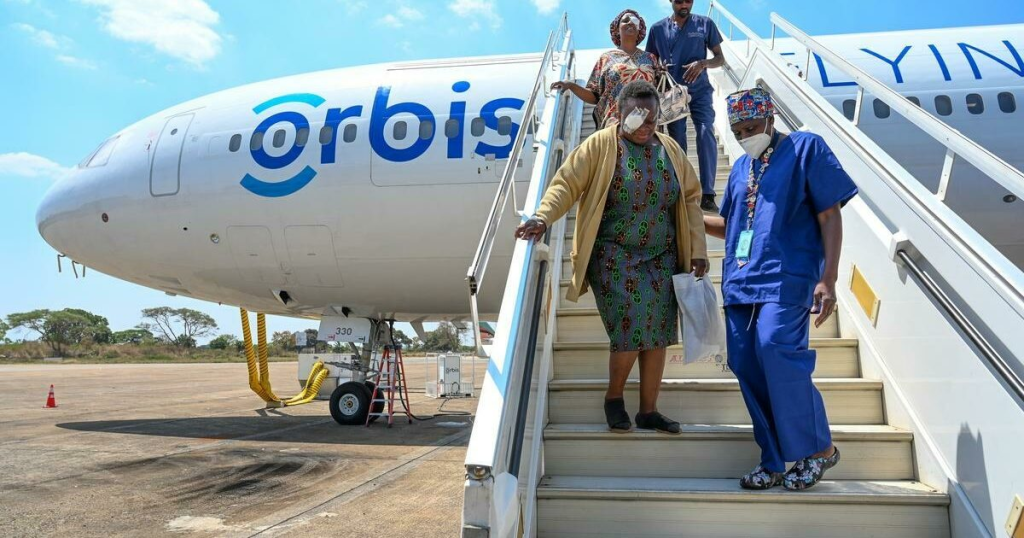Fun Flying: ‘Castle Spotting’ in a Scottish Autogyro
A tandem gyroplane’s front seat provides great recreational flying scenery.

Urquhart Castle in the Scottish Highlands looks great on an AutoGyro fly-by. [Photo: Dean Siracusa]
Ask any pilot and they’ll tell you of those rare flights that came together perfectly to create an aviation memory that will last until they’ve flown west. Sometimes these flights are just meant to be another routine hour on the Hobbs, but then something clicks, and magic happens.
For one Texas-based fixed-wing pilot, flying an open-cockpit tandem Autogyro from the front seat over the gorgeous scenery of Scotland turned a basic introductory flight into one of these special moments.
Pilot Dean Siracusa jumped at the opportunity to head to the U.K. in late April 2022 and fly a Magni MTOSport Autogyro, a niche flying machine that can at different times be called a “gyroplane” or simply a “gyro.”
As founder and CEO of Flying Eyes Optics, Siracusa has enjoyed so much growth in his headset-friendly aviation sunglasses line that the company recently moved a third time into a larger facility. Siracusa credits this growth to a continuous advertising campaign that includes a strong social media presence.
A good deal of that social media exposure came from YouTube channel sponsorships, so when Dan Millican and Christy Wong, the hosts of the “Taking Off” YouTube channel which Siracusa sponsors invited him to join them in the U.K. to create video content flying an assortment of airplanes, rotorcraft, and gyros, he happily went along to help with the trip.
The “Taking Off” team soon found itself in Inverness, Scotland, where a pair of gyros were waiting at Inverness Airport (EGPE). Siracusa would fly with CFI Nick Phippen of Highland Aviation from the front seat of the tandem Magni to shoot video of the hosts flying a Cavalon, a popular two-person side-by-side gyro. While this could have been just a fun outing, it was much more than that to Siracusa, who had taken a gyro ground school and one hour of flight interaction back home in Austin, Texas, prior to departing for the U.K.
“It's very cold in Scotland during that time of year, and in an open-cockpit airplane, we had to wear exposure suits,” Siracusa said. “It’s not a full-on dry suit for overwater flying—more like a very well-insulated flight suit. We climbed up to almost 5,000 feet, and when you're in the front seat of a tandem open-cockpit aircraft with no wings, it's kind of weird. You're really exposed to the world, and at that altitude with nothing around you, it's an interesting feeling.”
Not Exactly an Airplane or a Helicopter
With about 3,000 hours in his logbook, Siracusa had to step back from what he knew about flying airplanes and rotorcraft to learn the unique aspects of flying the AutoGyro. “While I do not have my rotorcraft rating,” Siracusa explains, “I have quite a bit of time in helicopters. So knowing that the gyro is in continuous autorotation was helpful. Unlike fixed-wing airplanes where airspeed is the top priority, with a gyro, it is all about rotor speed. After spinning up the rotor on the ground using a clutch to pull power off the engine, your forward speed is what keeps the rotor spinning and creating lift. One of the most important instruments right in front of me was the rotor speed indicator, because you descend very quickly in a controlled autorotation if power is pulled.”
Siracusa described one such arrival that demonstrated the safety element built into gyros for when/if an engine failure happens. In his gyro training back in Texas, the instructor pulled the power at about 1,000 feet right over the runway numbers, and the gyro performed a steep but slow descent to touch down about 200 feet past those numbers. “It’s dramatic but quite gentle, and when you get close to the ground, you just flare a bit, land, and roll out like a fixed-wing airplane,” he said.
Gorgeous Scottish Scenery
On the Scotland gyro flight out of Inverness Airport, Siracusa was treated to a spectacular view of the scenic Scottish Highlands from his vantage point in the front seat of the Magni. “We spent time over Urquhart Castle, which has ruins dating as far back as the 13th century. This castle sits beside Loch Ness and was one of many castles we spotted, and all looked amazing from the air. And no, we did not see Nessie, a.k.a The Loch Ness Monster, although being up in an open-cockpit gyro would make a great platform to search for her.”
Extreme Maneuverability
One of the major attributes of the Meyers 200 airplanes that Siracusa has owned is the spirited handling, so naturally, the pilot wanted to find out how a gyro handles. He’s flown enough to know that steep turns in an airplane require the right speed and some altitude, or bad things can happen. So when his Texas instructor demonstrated the steep-turning capability of a gyro, Siracusa was blown away. “The maneuverability was what I was most impressed with. We went out to some open fields and were low to the ground doing very steep turns. It was a lot of fun doing these tight, steep turns in a gyro because we were not even going very fast.”
AutoGyros: Get Used to That Vibration
One aspect of flying an AutoGyro is the inherent vibration caused by the spinning rotor blades, which is transferred to the control stick. Siracusa explained that it is not a problem. “The gyro vibrated, but I wouldn't say it vibrates a great deal more than a small piston helicopter that doesn't have boosted controls. You're not gripping the stick like a student pilot or having to yank and bank or anything like that, just a light touch with two fingers and a thumb. You’re kind of just gently guiding it to go left, right, up or down,” he said.
An AutoGyro in his Future?
To better serve his business needs, Siracusa is planning to purchase a Cessna Citation II business jet after owning a Skyhawk, a Grumman Tiger, and two Meyers 200s used for both business and recreational flying. However, after his time in Autogyros in both Texas and Scotland, eventually buying one is something the pilot would welcome.
“If I had some property here in Texas and I wanted to just go fly around and explore the property or fly down to some lakes or rivers with friends, a gyro would be perfect for that,” Siracusa said. “These really are leisure craft, and while I have friends who have taken gyros across the country, I have airplanes that are better suited for those missions. Burning less than 6 gallons per hour and going about 100 mph [87 knots] in cruise, a gyro is something that would be a lot of enjoyment on a nice weekend to just go out and have some fun.”

Sign-up for newsletters & special offers!
Get the latest FLYING stories & special offers delivered directly to your inbox






